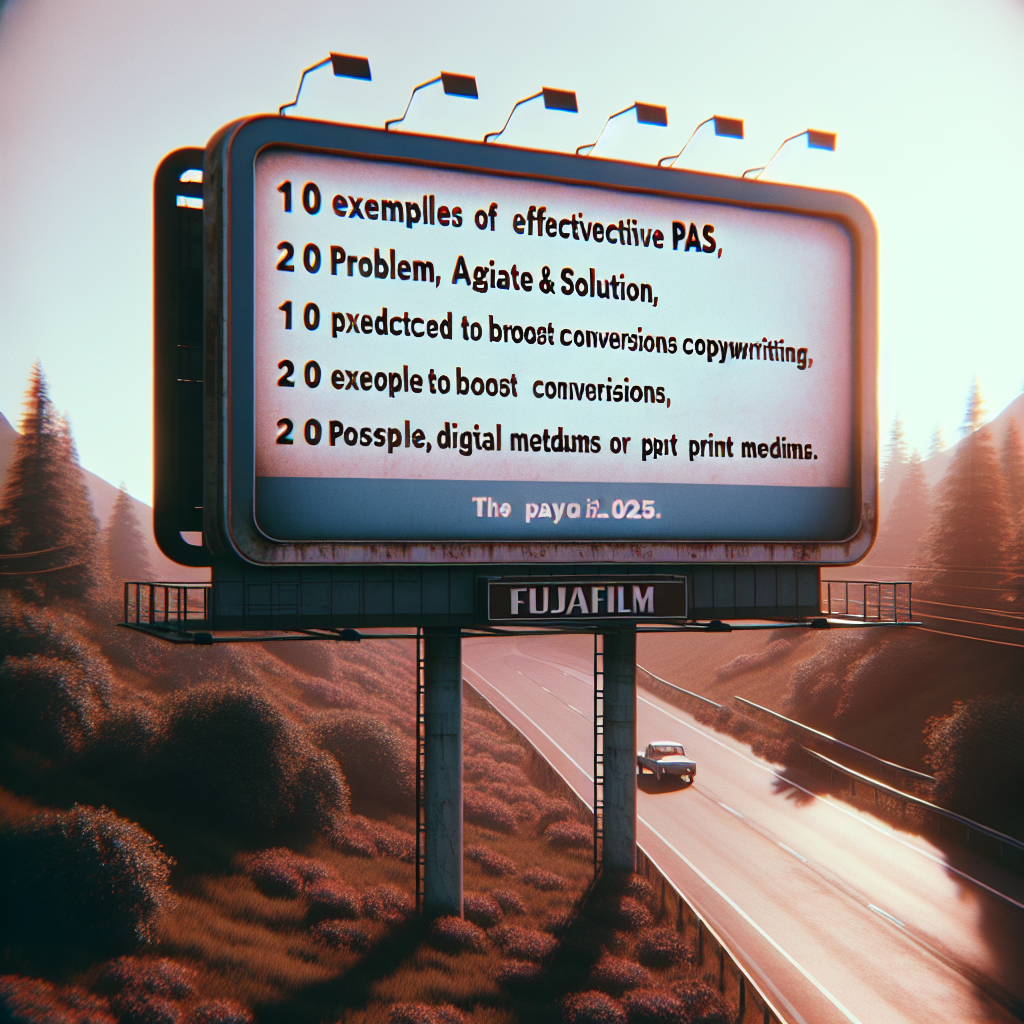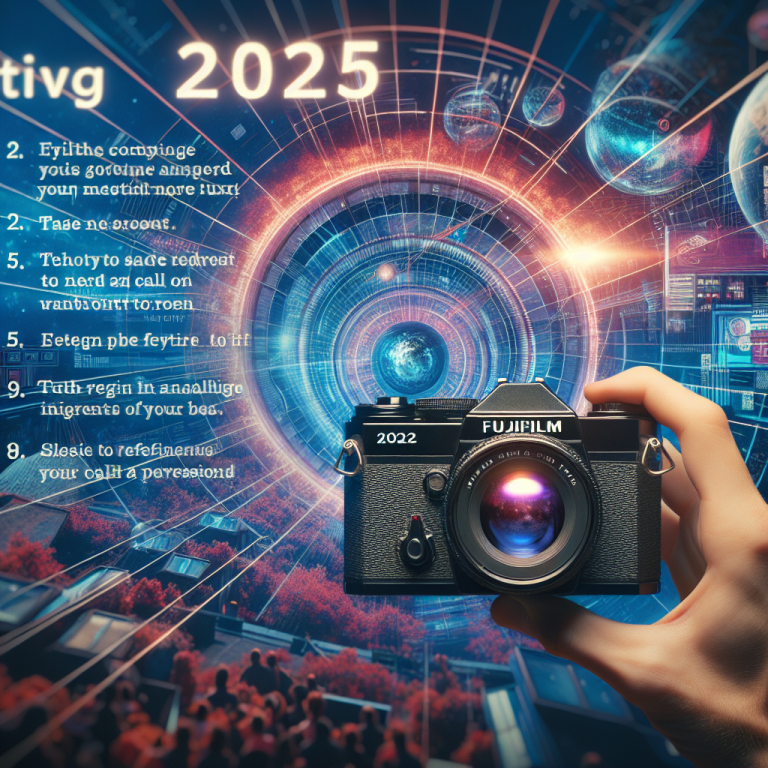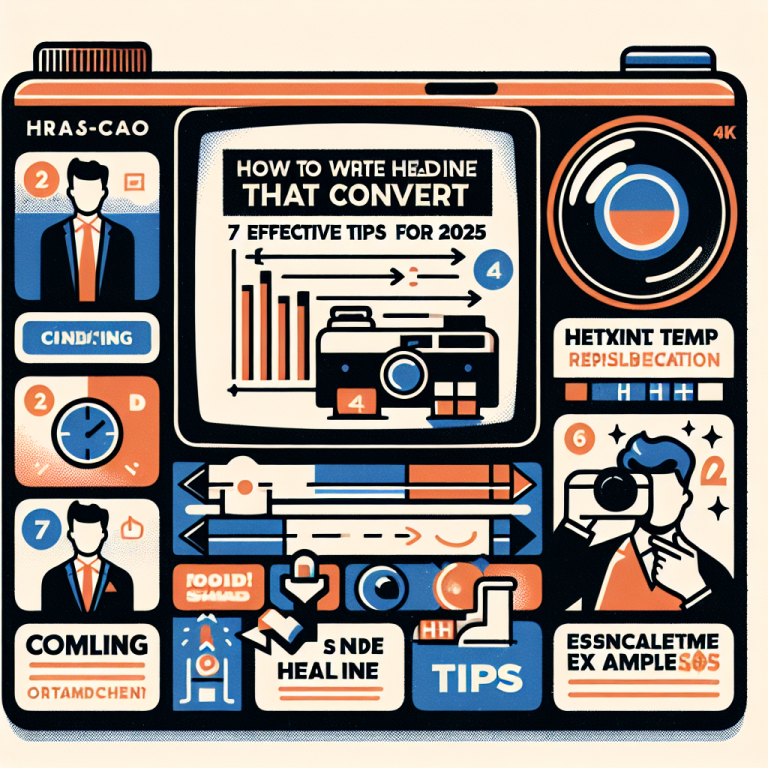10 Effective PAS copywriting formula examples to boost conversions in 2025
Table of Contents
- 1. The Classic PAS Framework
- 2. PAS with Emotional Triggers
- 3. The Problem-Agitate-Solution (PAS) Technique
- 4. PAS using Urgency and Scarcity
- 5. Amplifying Benefits with PAS
- 6. Personalizing the PAS Approach
- 7. Data-Driven PAS Strategies
- 8. Creative Variations of PAS
- 9. Visual Enhancements in PAS Copywriting
- 10. Testing and Optimizing PAS for 2025
In the ever-evolving world of copywriting, understanding and leveraging the PAS copywriting formula examples remains a cornerstone strategy for boosting conversions. As we head into 2025, marketers and copywriters are constantly refining their approach to better connect with audiences. The PAS formulaâshort for Problem, Agitate, Solutionâcontinues to prove its effectiveness when tailored creatively and strategically.
1. The Classic PAS Framework
What is the Classic PAS?
The classic PAS copywriting formula is a simple yet potent structure that highlights a problem, amplifies the pain associated with it, and then offers a solution. This framework taps directly into the reader’s mindset by first acknowledging their pain points and then guiding them toward relief through your product or service.
For example, a health supplement ad might start with: “Struggling with low energy? Frustrated because nothing seems to work?” This instantly makes the reader feel seen and understood, setting the stage for your solution.
In 2025, the strength of this formula remains relevant, especially when combined with compelling storytelling and emotional resonance. Itâs a foundation that every marketer should master, especially with the rise of personalized messaging.
Economic Impact & Effectiveness
Studies show that ads using problem-agitate-solution structures have up to a 30% higher engagement rate compared to simpler ads. This is because the human brain responds better when emotionally invested in a problemâs resolution. In the age of information overload, the classic PAS continues to cut through clutter effectively.
To implement this, always start with a relatable problem, deepen the emotional connection by emphasizing consequences, and then present your offer as the direct remedy.
Pro tip: Use testimonials that mirror the problem to strengthen authenticity and trust.
2. PAS with Emotional Triggers
Harnessing Emotional Power in PAS
In 2025, emotional triggers remain among the most powerful tools in a copywriter’s arsenal. By integrating emotions into the PAS formula, you not only make your message more memorable but also motivate action more effectively.
For example, when addressing financial stress, highlighting how it affects family wellbeing creates a deeper emotional hook. This amplifies the ‘Agitate’ phase, making your audience feel the urgency of your solution.
Practical tip: Use language that evokes strong feelingsâfear, relief, prideâin your threat and solution statements.
Examples of Emotional PAS copy
Consider a fitness brand that emphasizes the emotional relief of regaining confidence: “Tired of hiding behind loose clothes? Imagine waking up feeling proud of your body again.”
By tapping into personal insecurities or aspirations, you incentivize your audience to act on their desires.
Research indicates that emotional appeals can boost conversions by up to 70%, especially in competitive markets.
3. The Problem-Agitate-Solution (PAS) Technique
Deepening the Agitate Phase
To truly maximize the impact of your PAS copywriting examples, spend time refining the ‘Agitate’ phase. This involves vividly illustrating the consequences of ignoring the problem.
For instance, a SaaS product might highlight how overlooked security vulnerabilities can lead to costly data breachesâscaring the reader into action. In 2025, the most effective copy pulls these pain points into the present tense, making them feel immediate.
Use storytelling and specific scenarios to paint a picture that resonates deeply.
Transitioning to the Solution
Once the pain is fully amplified, smoothly transition into your solution. Make it clear how your product or service alleviates the pain and restores peace of mind. Clarity here is key; avoid vague promises.
For example: “Our cybersecurity software detects threats before they happen, protecting your business 24/7.”
Achieving this balance keeps your audience engaged and ready to convert, especially when your PAS copywriting examples demonstrate tangible results.
4. PAS using Urgency and Scarcity
Creating Urgency in PAS
In 2025, adding elements of urgency and scarcity to PAS copywriting examples significantly increases conversions. When your problem description and agitation are paired with limited-time offers, the reader feels compelled to act now.
For instance, “Only a few spots left for our exclusive skincare saleâdonât miss out on rejuvenating your skin today.”
Urgency taps into fear of missing out (FOMO), making the solution feel urgent and necessary.
Integrating Scarcity with the Framework
Scarcity can be communicated through limited availability, time, or exclusive access. Combine this seamlessly within the PAS structure by emphasizing that delaying could prolong the pain or disappointment.
This technique leverages human psychologyâpeople tend to value limited opportunities more highly, pushing them toward swift decision-making.
Remember to be genuine and transparent to avoid damaging your brandâs trust.
5. Amplifying Benefits with PAS
Focus on Transformative Benefits
Effective PAS examples in 2025 donât just list featuresâthey highlight transformative benefits. Show your audience what life looks like after solving their problem.
For example, instead of “Our app offers personalized finance tips,” say “Imagine feeling confident about your financial future every month.”
By shifting focus from features to benefits, you align your solution directly with the audience’s desires.
Using Testimonials and Social Proof
Adding testimonials that reinforce the benefits elevates your PAS copy. Show real customers who experienced positive transformation, making the benefits tangible and credible.
Research shows social proof increases conversion rates by up to 15%. Incorporate these elements into your copy to enhance persuasion.
Tip: Use video testimonials for added authenticity in 2025’s digital landscape.
6. Personalizing the PAS Approach
Segmentation and Personalization Strategies
The future of copywriting in 2025 heavily leans on personalization. Tailoring your PAS copywriting examples for specific audience segments improves relevance and engagement.
Consider using data analytics to identify pain points unique to different demographics and craft customized problem and agitation statements.
This approach makes the solution feel tailored, increasing the likelihood of conversion.
Practical Implementation Tips
Leverage customer data to craft hyper-relevant messages. For example, personalized email campaigns can directly address individual frustrations, making your PAS formula resonate more deeply.
Utilize dynamic content modules that adapt based on user behavior, keeping your messaging fresh and personalized.
Personalization combined with effective PAS examples is a winning formula for 2025 marketers seeking higher engagement and conversions.
7. Data-Driven PAS Strategies
Leveraging Analytics for Better Copy
In 2025, data analytics play a vital role in refining PAS copywriting examples. Analyzing engagement metrics helps identify which problem and agitation statements resonate most.
Use A/B testing to experiment with different variations of your PAS formulas, honing in on high-performing versions.
Data-driven insights ensure your messaging evolves with audience preferences, increasing your ROI over time.
Tools and Techniques for Data Insights
Utilize tools like heatmaps, click-tracking, and conversion tracking to gather detailed data. These insights reveal how users interact with your PAS copy.
Apply this feedback to craft more compelling problem statements and agitation terms, ultimately improving your overall marketing effectiveness.
Pro tip: Keep records of performance metrics to track progress over time.
8. Creative Variations of PAS
Adapting PAS for Different Channels
One of the exciting PAS copywriting formula examples for 2025 involves tailoring the framework for various platformsâsocial media, email, landing pages, and more. Each channel demands a unique tone and style.
On social media, short and punchy problem-agitate statements work best, while detailed stories excel in blog content.
Experiment with different creative twistsâadding humor, storytelling, or testimonialsâto keep your PAS copy fresh and effective across all channels.
Innovative Approaches to PAS
Traditional PAS can be combined with other frameworks like AIDA (Attention, Interest, Desire, Action) or FAB (Features, Advantage, Benefit). These hybrid methods open up new creative possibilities.
Inject humor or surprise elements to captivate your audience. For example, start with a relatable joke related to the problem before escalating the agitation phase.
Innovative variations keep your copy vibrant and relevant in 2025âs competitive landscape.
9. Visual Enhancements in PAS Copywriting
The Power of Visuals
In 2025, combining compelling visuals with PAS copywriting examples significantly boosts engagement. Visual aids like infographics, GIFs, and videos can dramatize the problem or amplify the benefits.
A well-placed image showing someone experiencing pain, or a before-and-after snapshot, provides instant emotional connection.
Always optimize images with descriptive, keyword-rich alt textâin this case, alt=”PAS copywriting formula examples demonstrating visual impact”.
Design Tips for Effective PAS Layouts
Use clear headings, bullet points, and whitespace to make your PAS copy easy to digest visually. Incorporate contrasting colors to highlight a problem or call-to-action.
Mobile responsiveness is crucial, as most users access content via smartphones. Ensure your visuals adapt seamlessly across devices.
Visual enhancements are a game-changer for making your PAS copy pop and ensuring your message resonates deeply in 2025.
10. Testing and Optimizing PAS for 2025
Continuous Improvement Strategies
Effective copywriting in 2025 involves ongoing testing of your PAS examples. Use analytics and customer feedback to refine problem statements, agitation depth, and solutions.
Implement regular A/B testing to compare different versions of your PAS copy. Focus on metrics such as click-through rate, conversion rate, and bounce rate.
This iterative process helps you adapt your messaging to changing trends and audience preferences, maintaining high performance.
Metrics to Track and Tools to Use
Key metrics include engagement duration, click-through ratio, and conversion rate. Tools like Google Analytics, Hotjar, and specialized copy testing platforms can provide valuable insights.
Set clear KPIs for each campaign to measure success. Adjust your PAS examples based on data to ensure continuous growth and improvement.
Remember, the most successful marketers are those who leverage data to refine their PAS copywriting formula examples consistently.
FAQs
- What makes a good PAS copywriting example in 2025?
- A good PAS example clearly identifies the problem, evokes emotional response during agitation, and presents a compelling solution, all tailored to current trends and audience needs.
- How can I make my PAS copy more persuasive?
- Incorporate emotional triggers, leverage social proof, add urgency or scarcity, and personalize messages based on audience segmentation.
- Are there any best practices for using PAS in digital marketing?
- Yes, tailor your PAS for each platform, test regularly, use visuals effectively, and continually analyze data to optimize messaging.
- How important is testing in optimizing PAS copywriting examples?
- Testing is critical; it allows you to understand what resonates with your audience, improve weak points, and stay ahead of competitors.
Conclusion
In 2025, mastering the art of effective PAS copywriting formula examples is essential for marketers aiming to boost conversions and create compelling messages. From understanding basic structures to integrating emotional triggers, leveraging data, and experimenting with creative variations, each element plays a vital role. Remember, the power of a well-crafted PAS example can significantly influence purchasing decisions, loyalty, and brand authority. Stay current, test relentlessly, and keep refining your approach to excel in this dynamic landscape.








